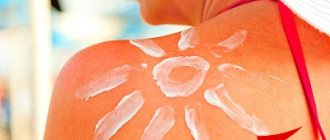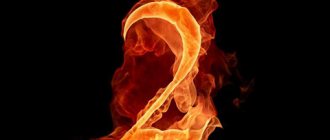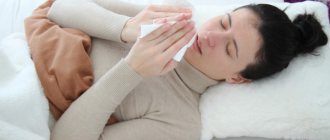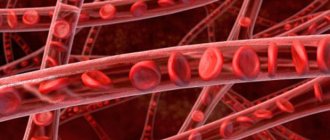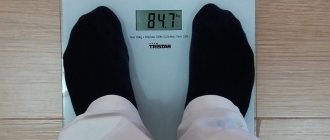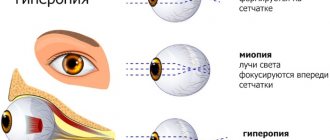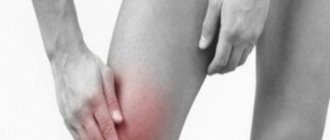Skin structure
The role of the skin of the body is to protect the body from environmental influences, form thermoregulation, and water and electrolyte balance.
There are three main layers of skin:
- outer - epidermis;
- connective tissue part - dermis;
- subcutaneous tissue - hypodermis.
The epidermis provides protection from the pathogenic influence of the external environment. The outer layer is able to renew itself quickly. All types of burns, even minor ones, destroy the epidermis.
The dermis, consisting of collagen fibers and elastin, provides the skin with elasticity. The destruction of the middle layer affects thermoregulation and the body's immune defense.
The hypodermis is a subcutaneous fatty tissue that retains nutrients. The hypodermis provides energy exchange and protection of internal organs from mechanical damage.
Superficial burns heal without scarring, but damage to the dermis leads to the formation of scars. Complete deformation of the skin disrupts all skin functions and opens the way to inflammatory processes in internal organs. Violation of the circulatory system causes a malfunction in the nutrition of nerve endings, leading to dehydration of the body.
The classification of burn injuries is based on the characteristics of damage to each layer. Understanding the processes and the assistance provided help prevent complications.
Detailed characteristics
The division of burns into degrees and their characteristics requires a more detailed description by degree.
First
In the first degree, the burn does not cause much harm to the human body. The negative impact in this case is short-term; only the outer cover is damaged. In this case, redness, swelling and pain develop. The pain intensifies when touched.
How long does it take for a grade 1 injury to go away without leaving a trace? Even if you do not take measures, 3-4 days are usually enough for complete recovery. Sometimes two days are enough for the swelling to go away. There are no traces left on the skin after such a violation.
Second
A second-degree burn is diagnosed when the upper layer of the skin is affected, but the symptoms become more pronounced. Soreness, redness and swelling become more pronounced, accompanied by the formation of blisters. They can vary in size, sometimes merge and occupy a large area. Inside them there is a liquid that has a yellowish tint. With a second degree burn, severe pain develops that lasts for a long time, and touching the site of injury significantly increases pain sensitivity.
Recovery in this case takes longer. Small blisters can dry out on the 4th day, while large ones often rupture and expose a surface that is highly painful. Final healing occurs within two weeks
. With a small area of injury, healing takes two weeks, leaving no significant marks.
The extent of the burn determines the likelihood of complications developing. Very often, a 2nd degree thermal burn is accompanied by infection.
Third
Third degree burns include damage to the skin throughout its entire depth. This determines the severity of this violation. Spontaneous healing and restoration of integrity in this case is impossible. In addition, grade 3 can lead to the development of burn disease due to extensive tissue necrosis. Decay products begin to enter the blood and poison the body.
How much therapy is required in this case? If there is a 3rd degree thermal burn, treatment is delayed for months; at first, the patient is in a specialized hospital. Often there is a need for surgical intervention. Scars remaining after treatment can only be removed surgically.
In clinical practice, third-degree burns are divided into two subtypes:
- In the first option (3a), deep damage to the skin occurs, but with partial preservation of sensitivity, since some nerve endings remain intact.
- The second option is more severe, since in this case there is no sensitivity in the affected area. The skin is completely destroyed and its restoration becomes impossible.
Symptoms also vary in severity. In this case, the patient often goes into shock and behavior becomes inappropriate. Pallor of the remaining skin, vomiting, and muscle cramps are noted. First there is an increase in pressure, and then it can drop sharply. Kidney function is impaired, polyuria develops, and the patient constantly asks to drink. The human body becomes covered with blisters containing bloody-serous contents. Touching the affected areas is most often painless.
A person may lose consciousness, and as a result of intoxication, death occurs. Only specialists can help in this case, so the condition is considered acute and requires immediate hospitalization.
In children, burn injuries also occur, but given the imperfect protection, you must definitely consult a doctor for help and not self-medicate.
Fourth
The classification of burns also includes the fourth - the most severe degree. With it, tissue charring occurs throughout its depth. The condition of such a patient is stable and serious; most often he is admitted to the department unconscious. It becomes possible to save him from death provided that assistance is provided quickly and the area of damage is minimal.
After successful treatment, in the best case, pronounced changes remain on the skin, and in the worst case, the person may require amputation of a limb.
Radiation burn
Injury can be caused by direct exposure of the skin to solar or ionizing radiation. Most often, such burns occur among tanning enthusiasts. In addition, there are burns from x-rays and lesions as a result of radiation therapy prescribed for cancer.
A radiation burn is characterized by severe redness of the skin
Characterized by redness of the skin, burning of the damaged area. In severe cases, blisters appear and the temperature rises. The cause can be both solar and ultraviolet radiation from a solarium. It is especially dangerous to fall asleep in the sun. In this state, a person does not feel the first manifestations of the burn and does not control the time spent under direct rays.
Classification of burns
Burns are tissue damage that can be caused by chemicals, high temperature, sunlight, electric current, x-rays, and medications.
Human skin is one of the main components of our body, a necessary attribute for water and temperature balance. When damaged, its ability to regulate metabolism is sharply reduced, and the body’s ability to resist bacteria and viruses is also reduced.
A burn is an open lesion of the skin, its appendages, mucous membranes and what is hidden under the skin at the site of the burn.
Burns are divided into several areas:
- Reason for receiving:
- Chemical: from various pesticides, cleaning products, etc.;
- Thermal: from hot steam, fire, boiling water, from touching hot household appliances, etc.;
- Electric, from current;
- Radiation, from the sun or other radiation;
- Combined.
By degree of damage:
- 1st degree burns manifest themselves through swelling, redness, and burning pain, but after three days the redness and swelling disappear, the damaged layer of skin peels off and tissue healing soon occurs.
- 2nd degree burns manifest themselves through severe swelling and redness, the appearance of blisters that are filled with a yellowish but transparent liquid. When the epidermis is removed, a moist pink wound will open. The first three days there is severe pain, but by the end of the first week both pain and inflammation decrease, and after ten days healing begins, while redness and pigmentation remain, but no scars remain.
- 3rd degree burns appear through a brown or grayish scab, while pain at the burn site is not felt as such, but healing is extremely difficult with suppuration and takes a long time. Afterwards, “burnt out” areas remain, in place of which scars will appear in the future. 3rd degree class A, all skin layers are damaged except the germ layer, the deepest, manifested through tense and large blisters. 3rd degree class B, all skin layers are damaged, huge blisters filled with bloody fluid are formed.
- 4th degree burns - complete damage not only to the skin, but also to the fact that underneath it, the scab will be denser and thicker, with obvious signs of charring. Damaged tissue is rejected extremely slowly, healing is accompanied by purulent complications, and in the future scars, tightening and other deformations appear at the sites of such burns.
The location of the lesion is very important; if part of the face or neck is damaged, then the risk of the appearance and development of swelling and inflammation increases, which will lead to problems with breathing, vision, etc. Damage to the upper body leads to restriction of movement and pain when sighing.
The burn itself “lives” its own life, it can mature; after damage has occurred, a first-degree burn gradually turns into a second, or a second-degree burn eventually becomes a third-degree burn.
At first, the burn is sterile, since high temperature kills everything, but later, due to a decrease in protective barriers, inflammation, infection and other problems often arise.
Characteristics of degrees
First
A relatively mild injury with hyperemia - redness of the skin, swelling, painful inflammation.
Similar signs can be observed for about a week. Then the top layer dies off, and pigment spots appear in the injured areas with the skin peeling off.
Second
In addition to swelling and characteristic redness, the appearance of blisters filled with cloudy yellow or light liquid is observed. Ruptures of the blisters expose bright red layers of germ skin. The patient experiences pain, the wound heals within two weeks without scarring, if there are no complications.
Third
Severe injuries of thermal origin at this stage are divided into 3-A and 3-B.
3-A is characterized by injury and death of the superficial layers of the skin. Hair follicles, sweat and sebaceous gland cells are preserved, which creates the preconditions for spontaneous growth of the edges of the injury inward.
3-B is characterized by lesions of all components of the skin along with adnexal formations. Accompanied by cell death with the formation of blisters filled with bloody fluid and mucus.
Touching the wound causes pain. Possible swelling, intoxication, dehydration, high temperature. Spontaneous healing is excluded. Hospitalization and medical intervention are required.
Fourth
The most severe category. Tissue cells become dead and charred. In addition to the skin, muscles, nerve endings, tendons, and even bones are exposed to thermal effects. Dead tissue is rejected by the body over several weeks. Healing is slow, producing scars that are unsightly.
The consequences are severe. Decay products disrupt the functioning of internal organs, affect the composition of the blood, hospitalization with surgical intervention is inevitable.
The victim experiences a phase of burn shock, which is accompanied by excessive excitability and high blood pressure. Later, the victim becomes indifferent and inhibited.
The severity of injuries is recognized by the depth and size of the lesion, which affects the period of treatment.
There are methods for calculating injured areas that are followed by doctors around the world. The characteristics of the victims and age differences affect the accuracy of the results.
Palm rule. The number of times the patient's palm will fit on the surface of the injury is determined based on the fact that it corresponds to approximately one percent of the skin. The method is used for small areas of lesions.
Rule of nines. The simplest method for establishing the burn surface. Based on this principle, the human body is symbolically divided into a number of independent anatomical regions and occupies 9% of the total surface:
- head with neck;
- stomach;
- breast;
- hand;
- hip;
- shin, foot.
The back is eighteen percent, the crotch is one.
Calculations of childhood injuries are accompanied by an adjustment to the fact that the child's head and neck occupy about 21% of the body surface. The method gives tentative values, but in extreme situations it helps in determining the degree of burn and drawing up a picture of the injury.
Postnikov method. Gauze or sterile cellophane is applied to the injury site and the contours of the lesions are indicated. The outlined fragments are cut out and then applied to graph paper to carefully calculate the area of influence. Burn percentages are determined using a special table.
The algorithm for providing first-aid to a patient determines the type of exposure and the characteristics of the burns. Burns of the first and second degrees allow for home care, in which it is recommended to adhere to the following tactics:
- Interrupt the patient's contact with the cause of the burn: move away from the fire; extinguish smoldering clothes.
- During thermal exposure, it is advisable to cool the skin with water at a temperature of 14 - 16 degrees for fifteen minutes. Next, make a sterile dressing.
- It is recommended to cool sunburn with a compress and take an analgesic orally: paracetamol, ibuprofen.
First aid is absolutely necessary for burns:
- chemical, electrical;
- III-IV degrees of any variety;
- over 1.5% or the surface of the palm;
- eyes, ears, face, nasopharynx;
- the appearance of chills, vomiting, disorders of consciousness;
- numbness of the affected areas.
Prompt assistance from professionals will ease the patient’s suffering, reduce infections and complications, speed up recovery, and quickly launch the rehabilitation mechanism.
Article verified
by the editors
Depending on the depth of the lesion, it is customary to distinguish 4 degrees of burns.
First
This is a minor burn that causes inflammation of the skin.
The skin becomes red, swollen and painful.
These symptoms last for about a week, then the surface layer of skin dies. Pigment spots remain at the burn site. The skin then peels off.
Second
Bubbles with a clear or cloudy, slightly yellowish liquid appear.
- The burn site is very painful, the skin is red and inflamed.
- The wound closes spontaneously after 10-15 days without scarring.
We invite you to read: What does a child’s skin allergy look like? 18 photos: how to recognize, signs
Third
At this stage, tissue cells die. III degree is divided into III A and III B.
The surface of the skin dies.
The cells of the sweat glands, sebaceous glands, and hair follicles are preserved.
All layers die off. A dense, thick scab of coagulated proteins and blood is formed.
Granular, easily bleeding granulation tissue develops, protecting the wound from external influences. Gradually it is replaced by connective tissue.
A deep star-shaped scar is formed.
IV degree
The most severe form of burn.
When exposed to high temperatures, fabrics become charred. The process involves all layers of skin, nerve endings, tendons, bones, and muscles.
Due to decay products, internal organs suffer and lose functionality, and the composition of the blood changes.
Burn shock develops and lasts up to 3 days. At first it manifests itself as increased blood pressure and excitability of the victim. These processes are replaced by inhibition and indifference.
The patient's skin is pale, with an earthy tint. Possible death.
Burns of I – III A degrees heal on their own. III B and IV degrees require surgical intervention.
What types of burns are there?
Depending on the source of injury, burns are classified into thermal, chemical, electrical and radiation.
Thermal
Thermal burns, the origin of which is due to thermal exposure, account for about 95% of all burn injuries.
- Most of them are domestic injuries.
- In half of the cases, the cause of thermal burns is fire, less often - hot steam, boiling water, contact with hot objects, molten materials.
- Thermal damage can affect the skin, mouth, respiratory tract, esophagus and stomach.
- The most dangerous are head burns, as they are accompanied by injuries to the eyes and respiratory organs and greatly affect the patient’s condition.
- In 47% of cases, thermal burns are localized on the legs.
Perineal burns are extremely dangerous because... lead to injuries and loss of functionality of the pelvic organs.
A burn of 1/3 of the body surface can lead to death.
The critical level of skin heating is 45°C. If it lasts longer than a minute, the properties of the protein change, cells are destroyed, tissue respiration is paralyzed and the metabolism in them is destroyed. In this case, overheating continues even if the heat source has stopped operating.
The spread of the burn can be stopped if the tissue is cooled quickly.
Tissue that has died due to heat is called eschar. Warming tissues to 60°C forms a wet scab (colliquation), with higher heating - a dry (coagulation) scab. The density and size of the scab vary.
The degree of damage from thermal burns depends on a number of factors:
- Temperatures. A burn occurs when the temperature reaches 45°C and worsens as it rises.
- Thermal conductivity of a substance (air, water, metal, etc.) in contact with the body. One hundred degree air in a sauna will not cause harm, however, boiling water at the same temperature can cause fatal injury. The higher the thermal conductivity, the more serious the injury.
- Duration of contact with the heat source.
- Level of air humidity (burn intensifies with high humidity).
- The general physical condition of the victim and his external integument.
With extensive burn injuries, burn shock occurs.
Burn shock is a deep burn syndrome.
Externally it manifests itself as muscle tremors, convulsions, chills, rapid breathing, tachycardia, thirst, nausea and vomiting. The skin becomes gray, dry, cold.
At first the victim is excited, then apathy sets in.
The victim's consciousness becomes confused or lost.
Chemical
Chemical burns occur due to unprotected contact with acids and salts of heavy metals.
- The share of chemical burns is about 7%.
- As a rule, they happen in chemical plants or laboratories.
Acting externally, concentrated acid affects the outer skin and mucous membranes. If acid is taken orally, the digestive organs suffer.
A dark crust of clotted blood and dead tissue (eschar) forms on the wound. It prevents the introduction of the chemical agent. Redness and swelling are moderate.
Thermal burns with alkalis
The scab is white, soft, moist. Alkaline burns are rougher than acid burns. They do not interfere with the penetration of alkali, so the burn goes deeper. A deep burn with alkalis is characterized by a voluminous marsh-colored scab, severe redness and swelling.
Chemical burns have more than just external symptoms. Often, chemical compounds that enter the body damage the kidneys and liver.
Chemical burns are characterized by slow wound healing and tissue regeneration. Burn shock is rare.
Electrical
Electrical burn, or electrical injury, occurs when coming into contact with household or atmospheric electricity.
- Alternating current above 120 V threatens human life.
- Features of electrical injury:
- Tunneling. The current destroys not only the outer coverings, but also penetrates the victim’s body.
- Non-contact damage, impact at a distance.
- The quality of the victim’s skin is important: its thickness and moisture.
As a rule, electrical injuries occur due to equipment failure or failure to comply with safety regulations.
Classification by penetration degree
Depending on how deep the damage has penetrated into the body, it is customary to distinguish the following types of injuries:
- superficial. The damage affects only the skin and skin vessels, resulting in hematomas and abrasions;
- subcutaneous Damage affects tendons, ligaments, muscle fibers, joints and bone tissue;
- cavitary. This is the most severe type of injury from this classification, since they are characterized by damage to internal organs located in the natural cavities of the body.
How to properly provide first aid for thermal burns
In order to help the victim, it is necessary to act according to the algorithm of sequential measures. If burns occur, you should:
- Eliminate the cause of the burn;
- Cool the affected area of skin. If it is grade 1-2, then you need to use running water for 15 minutes. If there are 3rd and 4th degree burns, then apply a sterile wet bandage and then cool the area with the bandage using standing water;
- Next, the affected area is covered with a new sterile, wet bandage;
- The patient should be kept at rest until the doctors arrive.
What not to do if a thermal burn occurs:
- Lubricate with creams, egg whites, oil, apply foam to the burned area of skin;
- Tear off clothing that is stuck to the skin;
- Puncture blisters caused by burns;
- Pour urine over the injured surface.
It is necessary to call an ambulance in the following cases:
- The area of damage is more than 5 palms;
- A child or an elderly person is burned;
- Burn 3 or 4 degrees;
- Burns in the groin;
- The oral cavity, respiratory tract, and head are burned;
- Both limbs were damaged at once.
Types of burns
There are 4 types.
1. Thermal burns. When damage occurred at maximum temperatures: steam, boiling water, hot objects.
2. Radiation exposure. They are also sunburns, which they get when the dose of ultraviolet radiation in a solarium or on the beach is exceeded. Harmful effects also come from infrared rays and ionizing radiation.
3. Chemical damage to the skin. The depth of the burn depends on the formula of the substance (acid, alkali), as well as the time of contact and concentration.
4. Electric. Electric shock. The reason is often faulty heating devices. From an electrical burn (of course, if it is not a lightning strike), damage to the skin is barely noticeable, but this type is dangerous because it sometimes leads to a serious imbalance in the functioning of internal systems.
Damage area
Burns are divided into groups of extensive and non-extensive injuries. A large area of damage, even with superficial violations, is associated with a threat to human life. Burn injuries measuring 10−15% or more are classified as extensive.
To determine the area of the wound area, use:
- palm rule;
- rule of nines;
- Postnikov's method.
The simplest is to compare the size of the victim’s palm, which is 1% of the body surface, with the area of injury. To “measure” small burns, this rule is actively used. Do not apply your palms directly to the body! The calculation is made approximate.
We suggest you familiarize yourself with how you can cure thrush in women
According to the rule of nines, body parts are conventionally divided into zones that are multiples of 9% of the total surface:
- head and neck - 9%;
- chest and abdomen (front of the body -18%);
- back and lower back (back of the body - 18%);
- each hand 9%;
- each leg 18%.
The perineal area makes up only 1%, but this area is very dangerous for damage, as it is connected to the entire excretory system of the body.
According to Postnikov's method, gauze or sterile cellophane is used for measurements, on which the contours of the burn are indicated. The area of the cut pieces of gauze or paper is calculated using graph paper.
The size, degree of burns and first aid influence the course of events and the nature of the spread of pathology.
Domestic burn
Most often we get burned while on vacation.
You can blame the unusual stove at the dacha, the glowing grill, the deceptive gentle rays of the sun and our relaxed state.
Most of the incidents could have been avoided if we had been a little more vigilant. After all, an adult, as a rule, knows how to handle dangerous substances and objects.
As for children, we remind you:
- any household chemicals in the house are locked up;
- make sure that the baby is not nearby when you are repairing an outlet, opening the oven, or frying shish kebab in the nearest forest;
- do not let your baby play with firecrackers, firecrackers, sparklers;
- do not pick up your baby while smoking or drinking tea;
- Do not allow children to remove hot food from the microwave themselves.
First pre-medical measures for chemical burns
Basic emergency care rules include the following:
- elimination of the damage factor;
- washing, cooling the burn site with running water;
- pain relief with over-the-counter medications;
- antiseptic wound treatment;
- providing fluids for extensive burns.
The types of burns and first aid must be consistent with each other in order to maximally neutralize the impact of the aggressive factor.
If the skin is damaged by boiling liquid, cooling is carried out for at least 15-20 minutes to protect healthy tissue and reduce pain. If your hands are burned, watches, bracelets, and rings should be removed so as not to increase swelling.
After chemical burns, it is important to eliminate the aggressive reagent as quickly as possible by actively washing for 20-30 minutes. Do not use napkins, as any pressure on the tissue accelerates the absorption of the caustic substance into the blood. To neutralize the acid, use a solution of baking soda (½ tsp per glass of water), alkali - acetic, citric, boric acid of 0.5-1% concentration.
Assistance to a victim after an electric shock is carried out in compliance with safety measures. You can touch and approach a person under voltage wearing rubber boots, gloves, and without using metal objects.
Radiation damage is extensive, which significantly affects well-being even with grade 1–2 damage. The victim needs fresh air and plenty of fluids.
When providing assistance, it is forbidden to open blisters that have appeared, remove foreign bodies from wounds, or tear off fragments of clothing. The use of fat-containing creams, oils, and ointments, which aggravate the condition of the wound and the well-being of the victim, is not allowed.
There are indications in which calling an ambulance or visiting a hospital for the victim is mandatory:
- burns 3-4 degrees;
- extensive 1st-2nd degree burns (the affected area is larger than the size of the victim’s palm);
- lesions of the face, neck, hands, feet, joints, perineum;
- deterioration of general condition - fever, nausea, numbness of the damaged area;
- burns of a child, an elderly person.
Understanding what types of burns there are, knowing the symptoms of different degrees of damage helps in making the right decision for emergency care.
To help a victim of a severe chemical burn, the following measures must be taken:
- Remove all clothing and jewelry that have been in contact with chemicals;
- Hold the affected area of skin under tap water for 30-40 minutes;
- Neutralize the effects of substances that caused the burn. Burns with acid preparations are washed with soap, after which they are doused with soda dissolved in water (15 glasses of water per 3 teaspoons of soda). For alkaline burns, they should be washed with a light solution of vinegar and water or well-diluted lemon juice. To neutralize lime, use a 20% glucose solution;
- A sterile, moist bandage should then be applied to help reduce pain;
- Finally, wrap the burned area with a sterile bandage.
Seeking medical help is mandatory if:
- There is a state of shock: shallow breathing, pale skin, fainting;
- The diameter of the burn is more than 7.5 cm and penetrates into the deep layers of tissue;
- The mucous membranes of the eyes, respiratory organs, head, neck or groin areas are affected;
- The patient accidentally ingested the chemical;
- The patient is unable to tolerate severe pain.
Be sure to tell your doctor what caused the burn. It is advisable to take the instructions for this product with you. And remember that the most important thing is vigilant control over potentially dangerous situations. Follow these precautions to prevent burns:
- Keep all potentially hazardous chemicals safely away from children;
- Cover all sockets in the apartment with special covers;
- Do not leave small children unattended near connected electrical appliances;
- Do not smoke in the house so that an accidental spark does not cause a fire;
- Do not place heaters near upholstered furniture and curtains at night;
- Do not use heaters that are faulty or damaged;
- Monitor the condition of the wiring in the house;
- Do not neglect safety precautions when working with chemical compounds in enterprises;
- Block children's access to matches and to the surface of the stove on which food is prepared;
- Read the weather forecast and try to stay indoors during thunderstorms.
Insure yourself and your family from sad consequences - adhere to safety precautions at home and in the workplace. This will help protect the most precious thing a person has - the health and people close to you.
A burn is damage to body tissue caused by high temperatures or certain chemicals.
Burns can be divided into several types: thermal, chemical, electrical, radiation and combined. The most common type of burns is thermal.
- There are 4 degrees of burns depending on their severity. Remember their simple description so that you can independently determine the degree of burn:
- • I degree: pain, redness of the skin, swelling.
- • Stage II: blisters appeared.
- • III degree: the blisters have burst, there is an open wound at the burn site.
• IV degree: charring, loss of sensitivity. For convenience, the area of body damage resulting from a burn is usually measured using the palms of the hands. One palm is equal to one percent of the body surface.
- Actions in case of a burn
- Important! You need to call a doctor if:
- • III and IV degree burns;
- • body damage more than 5%;
- • thermal burns of the face, groin area, buttocks, two limbs and respiratory tract;
- • chemical burns of the eyes, mouth, esophagus, groin area, buttocks, face;
- • appearance of signs of shock (loss of consciousness, sudden paleness of the skin);
- • if the pain is too severe and does not stop even after taking analgesics.
- What can you do on your own?
- Chemical burn (acid, alkali):
- • remove clothing and jewelry that has been exposed to the substance;
- • rinse the burn area under running water for at least 20 minutes;
We invite you to familiarize yourself with Ichthyosis of the skin in newborns: is this disease dangerous, what to do and how to treat the baby? Skin ichthyosis in children
• neutralize the effect of the substance. In case of an acid burn, wash the damaged area with soapy water or soda (a teaspoon of soda per 2.5 cups of water). For burns caused by alkali - a weak solution of citric acid or vinegar.
• apply a cold, damp cloth to the burn site to reduce pain;
• then apply a sterile bandage.
Attention! Do not wipe off any remaining substance with a tampon or piece of cloth. This way you will rub them into the skin even more.
- If your eyes are burned:
- • Call a doctor immediately. The future fate of your eyes depends on how quickly help is provided, as well as on the severity of the burn, the chemical composition of the substance, and its dose;
- • do not waste precious time searching for neutralizers, immediately begin rinsing your eyes with a weak stream of running water, opening your eyelids;
- • for burns caused by alkalis, milk can be used;
- • after washing, apply a dry, clean bandage;
- • take with you to the hospital a bottle or package from the agent on which the composition is written.
If the esophagus and stomach are burned: symptoms will be severe pain in the mouth, throat and internal organs. If the larynx is also burned, the victim may begin to choke. Bloody vomiting may occur.
- It is important to call a doctor as soon as possible and neutralize the effect of the chemicals.
- • in case of a burn with alkalis, gastric lavage is done with a weak solution of acetic acid, in case of a burn with acid - with a solution of baking soda;
- • rinse with a large amount of aqueous solution to completely remove the substance;
- • then transport the victim to a hospital or emergency room as soon as possible.
- Thermal burn:
- • immediately remove the damage factor;
• cool the affected area of the body. 1st and 2nd degree burns are cooled for 10-15 minutes under running water. 3rd and 4th degree burns: first apply a clean bandage and cool with it in standing water;
• after cooling, treat the burn site with a weak solution of potassium permanganate, then lubricate it with a special cream or aerosol (“Alazol” or “Panthenol”);
• if necessary, take an analgesic;
• over the next few days, inspect the burn site for contamination, infection (redness) and pus.
- It is forbidden :
- • apply any oil, cream, ointment (including panthenol) to a freshly burned, uncooled area;
- • puncture and rip off blisters;
- • tear off dried clothes;
- • apply potatoes or potato peelings;
Due to the high temperatures in the first minutes, all burns are sterile. And just applying all of the above remedies can provoke an infection.
Sunburn
It refers to thermal burns of the first and second degree. Despite the fact that it usually goes away on its own after a few days, there are several ways to alleviate the condition of the victim.
• apply a damp compress to the sore spot, it will relieve pain and soothe the skin. If possible, take a bath with water at room temperature (without using gels, shower creams or other cosmetics). As a last resort, you can wrap yourself in a damp sheet;
• take a pain reliever: most analgesics not only relieve pain, but also have an anti-inflammatory effect.
• Important! Remember that children should not be given aspirin. You can use acetaminophen (Panadol, Tylenol) instead. However, keep in mind that it does not have anti-inflammatory properties.
• drink more fluids to prevent dehydration: inflamed skin evaporates more moisture;
• apply ointment to relieve suffering. As a rule, it contains aloe vera, cortisone or hydrocortisone, panthenol and painkillers. (If you grow aloe at home, you can use its natural juice). The ointment or cream should not be rubbed in as usual, but applied carefully and gently with your fingertips. A little cream should remain on the surface of the skin so as not to dry out the skin.
- For sunburn, special products such as pantesol, bepanten, panthenol, afoderm, amprovisol, luan gel, ketocin, bamipin help well.
- Among folk remedies, cool kefir, yogurt or sour cream, chamomile infusion and strong black tea, chilled egg white have proven themselves well.
- Panthenol spray (you can also use cream, but it will be more painful to apply to the skin), kvotlan, drapolene, and aloe gel are also suitable for children.
- It is forbidden:
- • use alcohol-containing and alkaline products;
- • puncture blisters;
- • be in the sun with unprotected skin for the next few days.
Prevention of thermal burns
Quite a large number of thermal burns occur in everyday life. Therefore, it is very important to know the following rules to help prevent them:
- Don't smoke in bed;
- Keep household chemicals in separate boxes, away from children;
- Heat the water in the boiler to 50 degrees;
- Do not keep a huge number of magazines and newspapers in the apartment;
- Observe all safety precautions when using gas equipment;
- Remove all electrical wires and hide them from children;
- When working with chemicals or in hot shops, take all precautions;
- In summer, use protective creams to avoid sunburn.
Accidents can happen anytime, anywhere. No one is immune from this. And therefore you should be prepared for them in order to minimize the consequences of possible injuries. Carry special ointments or sprays with you to treat burns. And also be sure to learn the basic rules when providing first aid for burns in order to avoid making a mistake that could cost a person his life.
Treatment of burns
This characteristic of burns helps determine behavioral tactics during the provision of assistance. Four types of burn degrees help to quickly navigate in the event of damage and provide the necessary first and subsequent aid to the victim.
First aid
If, after examination, there is a suspicion of severe violations, then a doctor should be called. The classification accepted in medicine for burns allows you to determine first aid. This condition requires the following actions:
- eliminate the source of exposure;
- cool damaged areas;
- apply a sterile bandage;
- numb the burned area;
- call a doctor.
Treatment at home
How to help with first-degree damage and how to treat a 2nd-degree burn? You can do this at home. The exception is cases when the integrity of the bubbles is damaged, as well as severe or extensive damage. You can prevent the development of infection if you consult a doctor for treatment of the wound.
There is a direct relationship between the degree of burns and their treatment. For mild cases it is recommended:
- Cool the wound under running cold water, but applying ice in this case is not recommended.
. - Apply a topical solution to promote healing and relieve pain.
- Use ointment to prevent infection.
- Apply a sterile bandage.
If there is a 2nd degree burn in a child or an elderly person, treatment should be carried out on an outpatient or inpatient basis. This is necessary because immune protection at this age is quite low and there is a high probability of infection.

